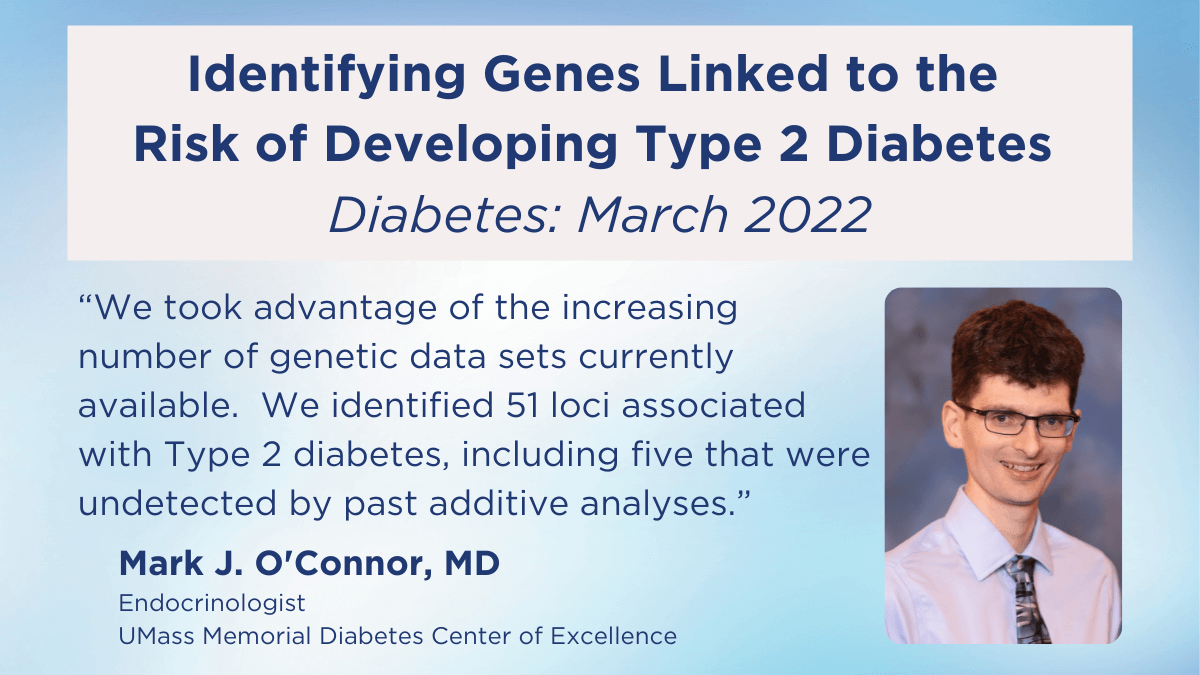Endocrinologist Mark O'Connor Identifying Genes Linked to the Risk of Developing Type 2 Diabetes
Date Posted: Thursday, March 31, 2022
Type 2 diabetes (T2D) affects nearly 1 out of 12 adults worldwide, but genetic risk factors are still not fully understood. Over the past decade, genome-wide association studies (GWAS) have used additive models to identify hundreds of loci associated with T2D risk. A locus is the specific physical location of a gene or other DNA sequence on a chromosome, like a genetic street address.
Additive models are computationally simple and statistically powerful, but they don’t always match the pattern of inheritance of Mendelian disorders, such as monogenic forms of diabetes, which occur when specific mutations in single genes are inherited from one parent. Certain variants can go undetected using additive models, leaving potentially important genes undiscovered.
Mark O’Connor, MD, an endocrinologist at the UMass Memorial Diabetes Center of Excellence, led the largest GWAS meta-analysis study ever done using a recessive model for T2D. “We identified 51 loci associated with type 2 diabetes, including five that were undetected by past additive analyses,” he said. The results, published in the journal Diabetes, demonstrate that recessive models can identify new genetic risk factors for T2D, including variants with large effect sizes.
“We took advantage of the increasing number of genetic data sets currently available,” said Dr. O’Connor. “GWAS sample sizes have seen explosive growth recently and that allowed us to conduct a recessive-model GWAS with much more power.”
He’s interested in learning more about genes that may be linked to a person’s T2D risk and studying new mechanisms by which people develop diabetes.
The full publication “Recessive Genome-Wide Meta-analysis Illuminates Genetic Architecture of Type 2 Diabetes” can be found here.
